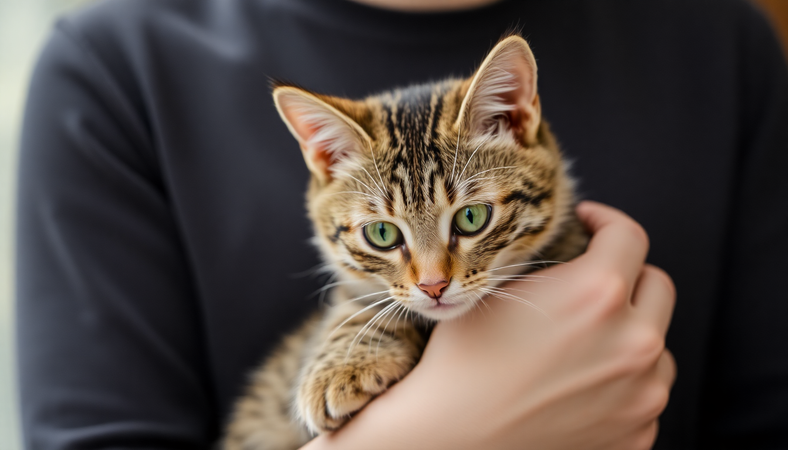
How to Detect FIP in Cats Early
Feline Infectious Peritonitis, or FIP, is a serious illness affecting cats worldwide. It’s caused by a mutation of a common virus, the feline coronavirus. While not all cats with the virus get sick, those who develop FIP face a life-threatening condition. Detecting FIP early can make a huge difference in treatment success and can save your cat’s life.
Understanding how to detect FIP in cats early is vital for every cat owner. Early detection allows for timely intervention with effective treatments like GS-441524, improving the odds of recovery. This guide will help you spot the signs and understand the diagnosis methods available.
Understanding FIP and Its Impact
FIP is a disease that affects cats when the benign feline coronavirus mutates inside their bodies. This mutation triggers an abnormal immune response leading to severe inflammation. Cats of all ages can be affected, but kittens and young cats are at higher risk.
The way FIP affects kittens can be particularly aggressive. Symptoms often appear quickly, and the disease can progress rapidly. Older cats might show more varied signs, sometimes making it harder to recognize early on. Understanding these differences helps cat owners act swiftly.
Early Signs of Feline Infectious Peritonitis
Recognizing the early signs of feline infectious peritonitis is the first step to getting your cat help. Early signs can be subtle and sometimes mistaken for other illnesses. Some common early signs include fever that does not respond to antibiotics, loss of appetite, weight loss, and lethargy.
In kittens, look for specific symptoms such as swelling of the belly due to fluid build-up, respiratory issues, or sudden behavioral changes like hiding more often. These clues can hint that your kitten may be developing FIP and needs veterinary attention immediately.
Recognizing FIP Symptoms in Cats
Symptoms of FIP vary depending on whether your cat has the wet or dry form. Wet FIP often causes fluid accumulation in the abdomen or chest, leading to a swollen belly or breathing difficulties. Dry FIP, on the other hand, causes granulomas or inflammatory masses forming in organs like the eyes, brain, or kidneys.
Other common symptoms include fever, jaundice, eye problems like blurred vision or inflammation, and neurological signs such as difficulty walking or seizures. The variety of symptoms can make spotting FIP tricky, especially when signs overlap with other diseases.
FIP Diagnosis Methods
Diagnosing FIP requires a careful combination of approaches. Veterinarians start with a detailed clinical examination and review your cat’s medical history. This helps rule out other conditions and focus on suspicious signs related to FIP.
FIP Blood Tests
Blood tests play a key role in the detection process. Common tests look for changes like high protein levels in the blood, low red blood cell counts, or elevated white blood cells. Specific antibody tests can detect the presence of feline coronavirus but cannot confirm FIP on their own.
Advanced blood tests measuring certain markers are improving in accuracy but still need to be combined with other diagnostic tools. While helpful, no single blood test can definitively confirm FIP.
Other Diagnostic Tools
Imaging, like ultrasounds or X-rays, helps spot fluid accumulation or organ changes typical of FIP. Fluid analysis from body cavities can show high protein levels and inflammatory cells suggestive of wet FIP.
In some cases, biopsies or molecular tests such as PCR can detect the mutated virus directly in tissues. These tests offer strong diagnostic evidence but can be invasive or require specialized labs.
What to Do If You Suspect FIP
If you notice early signs of FIP in your cat, act quickly. Schedule an appointment with your veterinarian as soon as possible. Early intervention provides the best chance for successful treatment.
Keep a close eye on your cat’s symptoms and provide the vet with detailed information about any changes. Prompt veterinary advice can lead to early diagnosis, where treatments are more effective.
Treatment Options and Success Rates
The breakthrough treatment GS-441524 has changed the outlook for cats with FIP. Studies show an impressive 96% cure rate when treatment starts early. GS-441524 targets the virus directly and can reverse symptoms, even in cases that seemed hopeless.
Early treatment is crucial because once the disease advances significantly, recovery chances drop. At FIP-Cure, we offer this treatment at charity prices and provide free, fast worldwide shipping, helping cat owners access this life-saving therapy.
Conclusion
Detecting FIP in cats early requires vigilance and quick action. Knowing the early signs and understanding the diagnosis methods can save your cat’s life. If you suspect FIP, seek veterinary help right away—early treatment dramatically improves outcomes.
FIP-Cure stands by cat owners around the world, offering effective treatment options and expert advice. Together, we can fight FIP and save more cats every day.
Remember, the sooner you identify the disease, the better the chance for your cat to overcome it. Keep an eye out, stay informed, and don’t hesitate to reach out for help.
Need FIP Treatment for Your Cat?
Don't wait - early treatment gives the best chance of recovery from FIP.
Get FIP Treatment Now


